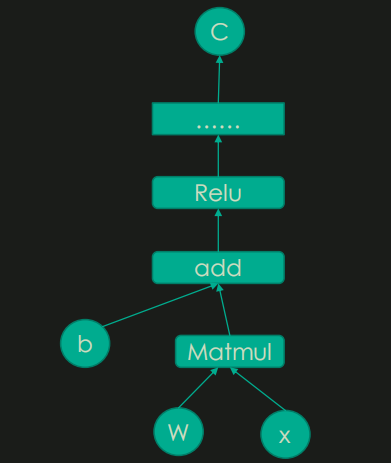Python机器学习之TensorFlow
(一)准备
- TensorFlow官方网址:www.tensorflow.org
- GitHub网址:github.com/tensorflow/tensorflow
- 模型仓库网址:github.com/tensorflow/models
- 支持此语言:python,C++,Go, Java, 后端使用C++、CUDA
- 安装:pip install --upgrade tensorflow==1.14.0
(二)核心:
- TensorFlow中的计算可以表示为一个有向图(Directed Graph),其中RNN是DAG
- 或者称计算图(Computation Graph)
- 其中每一个运算操作(operation)将作为一个节点(node)
- 计算图描述了数据的计算流程,也负责维护和更新状态
- 用户通过python,c++,go,Java语言设计这个这个数据计算的有向图
- 计算图中每一个节点可以有任意多个输入和任意多个输出
- 每一个节点描述了一种运算操作,节点可以算是运算操作的实例化(instance)
- 计算图中的边里面流动(flow)的数据被称为张量(tensor),故得名TensorFlow
(三)代码流程
Import tensorflow as tf b = tf.Variable(tf.zeros([100])) #b为w0是一个向量 W = tf.Variable(tf.random_uniform([784,100], -1, 1)) #W为变量,uniform:均匀分布,从均匀分布中随机取值784行100列 x = tf.placeholder(name=“x”) #placeholder:占位符 relu = tf.nn.relu(tf.matmul(W, x) + b) #激活函数,matmul矩阵相乘再加b,对线性结果进行非线性变化 Cost = […] #不同算法值不同 Sess = tf.Session() #开始执行算法 for step in range(0, 10): input = …construct 100-D input array… #创建input result = sess.run(cost, feed_dict={x: input}) print(step, result) #打印结果

kkk


